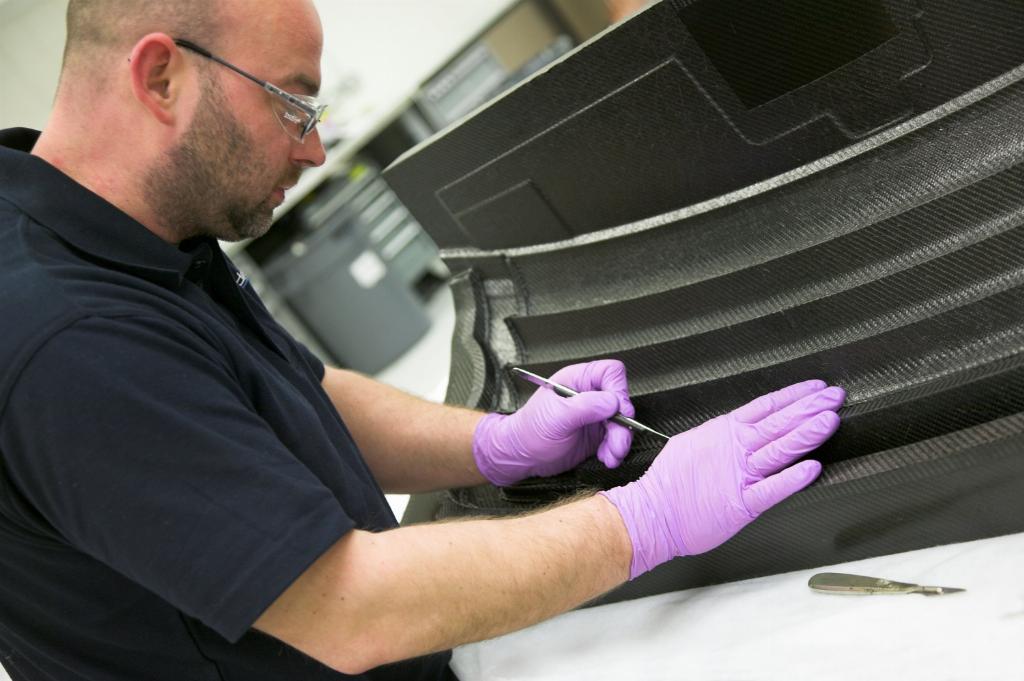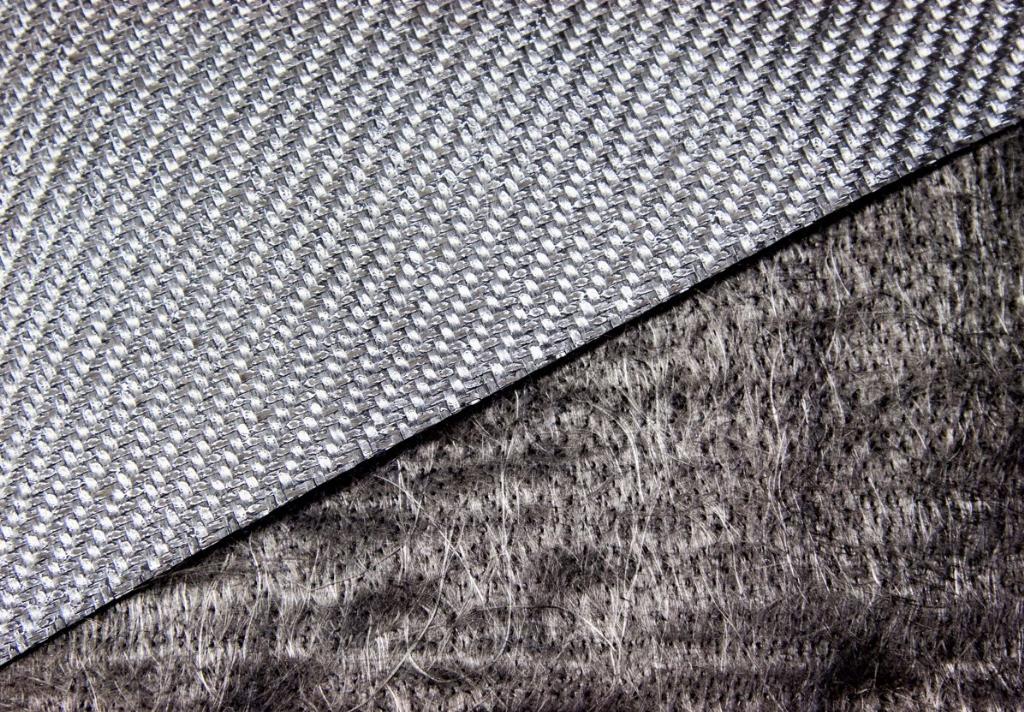Realising the rewards of recycling

Prodrive’s P2T process promises to help automotive companies incorporate more composites into their designs – while boosting recyclability at end-of-life. Lou Reade reports.
Reinforced composite materials are notoriously difficult to recycle, due mainly to their thermoset nature. However, there is increasing pressure to improve this – especially in the automotive sector, which must meet ever-increasing recycling targets.
Now, UK materials specialist, Prodrive Composites has developed a process to allow this. It says that – with help from the Advanced Manufacturing Research Centre (AMRC) at Sheffield University – the process could be used to make commercial parts before the end of this year.
The process, to produce recyclable composite components, is called P2T (which stands for ‘Primary to Tertiary’ – the spectrum of components that can be produced using the technique).
“End-of-life recycling is one of the biggest debates in the composites world today,” says John McQuilliam, chief engineer at Prodrive. “It affects automotive manufacturers and other industries too. The main barrier to recycling has been the type of resin used: thermosetting resins predominate, but cannot be readily recycled.”
P2T overcomes this by using a reactive thermoplastic resin – rather than a thermosetting epoxy, for example – to infuse a mat of reinforcing fibres. The material is effectively a liquid monomer that wets the fibres and is then catalysed to form a polymer – which forms a solid matrix.
Initial lab trial parts were performed using conventional vacuum resin infusion techniques. However, Prodrive is refining this for low-rate production – while also developing techniques that will be appropriate for economical, higher rate production.
“Parts we have made in conjunction with the AMRC, for instance, have been double diaphragm formed using matched press moulds,” says McQuilliam.
The development project began with an automotive OEM customer, who needed a high-performance structural material with a “lower environmental impact” than typically available composites.
While Prodrive says the process could work with any type of reinforcing fibre, it has been using carbon fibres – because their high mechanical performance and low density are most suitable for the company’s products and customers.
“The relatively high cost of carbon fibres also makes recycling them financially more acceptable – as well as environmentally desirable,” states McQuilliam.

Thermoplastic advantage
Because of the thermoplastic nature of the matrix, parts made using the P2T process can be recycled many times – with the material used to make primary, then secondary and finally tertiary components.
The highest mechanical properties are obtained during first use of the virgin fibres – which should be continuous fibres of known quality. These can be used to make highly loaded structural items such as suspension wishbones.
At end of life, a thermoplastic part like this can be cut into smaller pieces and reformed using heat – in a process such as hot press moulding. In this phase, the material can be used to make a secondary part, such as a body panel.
Alternatively, the plastic itself can be ‘depolymerised’ – that is, treated using either heat or chemicals to break the polymer bonds and return the material to its original ‘monomer’ state, allowing the ‘trapped’ fibre to be freed and reused. Prodrive has carried out chemical depolymerisation on a small scale in its lab.

Fibre loss
When the original composite part is recycled, there is a loss of performance in the fibres – which is why the material is then used for less demanding ‘secondary’ components.
“Virgin fibres are normally coated with a protective chemical, which is compatible with the future reinforcing resin,” says McQuilliam. “The reclamation process will cause some mechanical damage to the fibres including surface damage, contamination and possibly some thermal degradation.”
However, he says the overall effect is quite small, and results in a material with good mechanical properties that is suitable for applications such as body panels and interior trims – which need to be sturdy but are not part of the car’s crash structure.
Once a secondary part reaches the end of its life, it can be chopped up and remoulded into block material – and machined for use as inserts in composite parts, for instance. This kind of tertiary part can be recycled several times until, eventually, just the re-melted resin is recovered and the fibres are milled to supply other, lower grade parts.
Proving the process
Processes to boost recycling are always of interest to manufacturers, but they must never be allowed to affect part performance – or be too expensive. Prodrive says that P2T can help reduce certain costs while also competing with traditional materials.
For instance, Prodrive claims that the P2T process can cut both tooling costs and lead times. This is because conventional thermoplastic composites must be melted – at relatively high temperature – and injected into high pressure moulds. Tooling for P2T does not need to withstand these high temperatures and pressures.
“The reactive thermoplastic polymerisation process is also quicker than a thermoset autoclave cure and uses less energy,” McQuilliam explains.

Tests have shown that the material also performs favourably compared with traditional composite materials.
“We found that – for the same reinforcements and volume fractions – the mechanical properties are at least equivalent to a standard epoxy,” he says. “We have also seen significant improvements in fracture toughness, which should make for a more durable component in some environments.”
Future steps
Prodrive has already made a number of parts using the process, but must now make “a few further refinements before we see a substantial increase in production”.
With help from the AMRC, it is looking to scale up the process. In collaboration, they have run trials to demonstrate that P2T panels could be produced at an acceptable rate and cost. AMRC’s role is to bring the process closer to full production – and it has primarily focused on using automation to allow medium to high volume production at much lower costs, as well as looking at the recyclable nature of the materials used.
The partners have been working together on a series of large trial panels, which have been produced using an innovative process that can readily be automated. The trials have demonstrated that recyclable composite panels can be produced at a rate and cost to suit many industries – and the first parts may not be too far away.
“My best estimate for the first significant commercial application is late 2019,” concludes McQuilliam.








